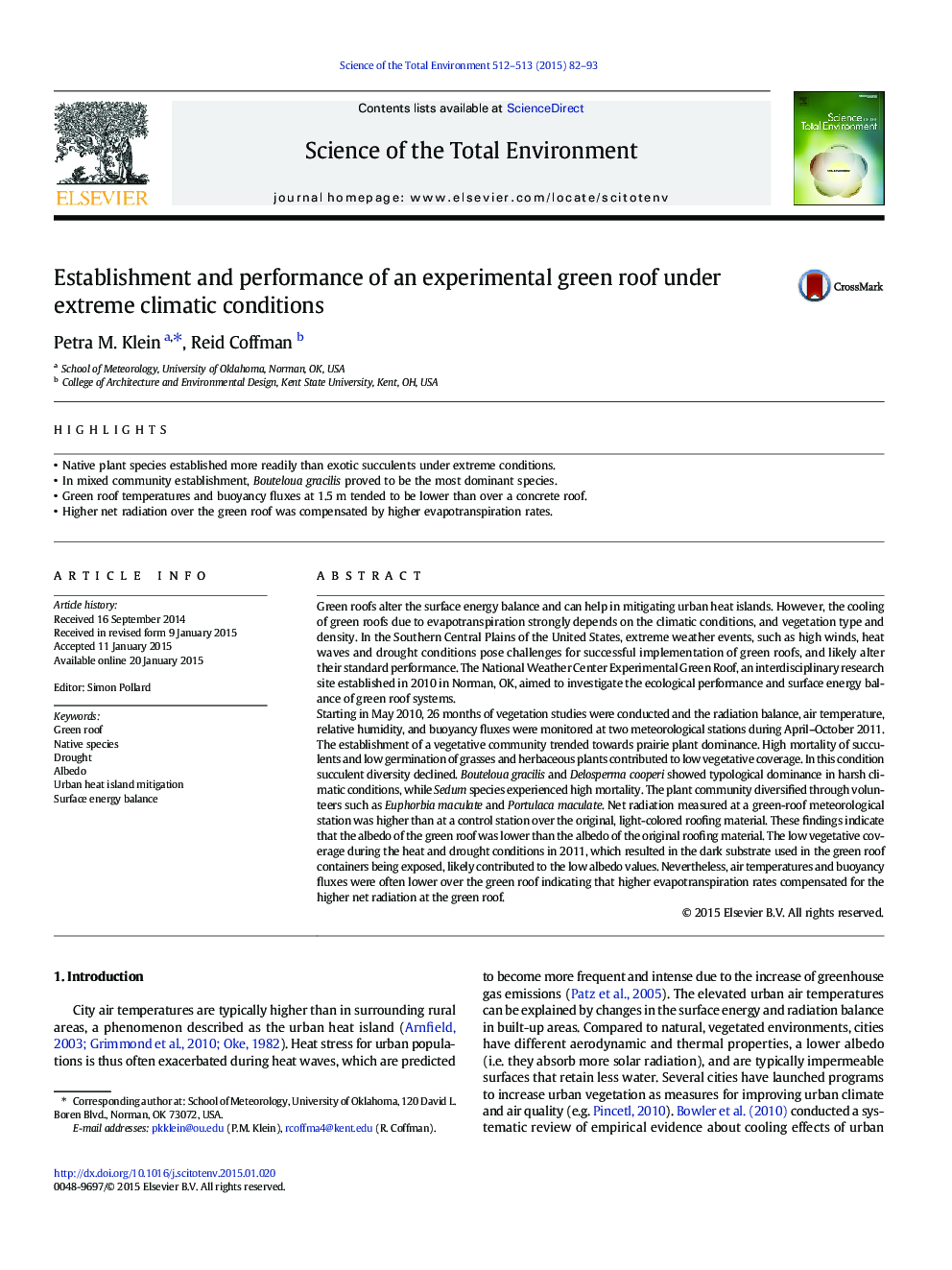| Article ID | Journal | Published Year | Pages | File Type |
|---|---|---|---|---|
| 6327146 | Science of The Total Environment | 2015 | 12 Pages |
Abstract
Starting in May 2010, 26Â months of vegetation studies were conducted and the radiation balance, air temperature, relative humidity, and buoyancy fluxes were monitored at two meteorological stations during April-October 2011. The establishment of a vegetative community trended towards prairie plant dominance. High mortality of succulents and low germination of grasses and herbaceous plants contributed to low vegetative coverage. In this condition succulent diversity declined. Bouteloua gracilis and Delosperma cooperi showed typological dominance in harsh climatic conditions, while Sedum species experienced high mortality. The plant community diversified through volunteers such as Euphorbia maculate and Portulaca maculate. Net radiation measured at a green-roof meteorological station was higher than at a control station over the original, light-colored roofing material. These findings indicate that the albedo of the green roof was lower than the albedo of the original roofing material. The low vegetative coverage during the heat and drought conditions in 2011, which resulted in the dark substrate used in the green roof containers being exposed, likely contributed to the low albedo values. Nevertheless, air temperatures and buoyancy fluxes were often lower over the green roof indicating that higher evapotranspiration rates compensated for the higher net radiation at the green roof.
Related Topics
Life Sciences
Environmental Science
Environmental Chemistry
Authors
Petra M. Klein, Reid Coffman,
